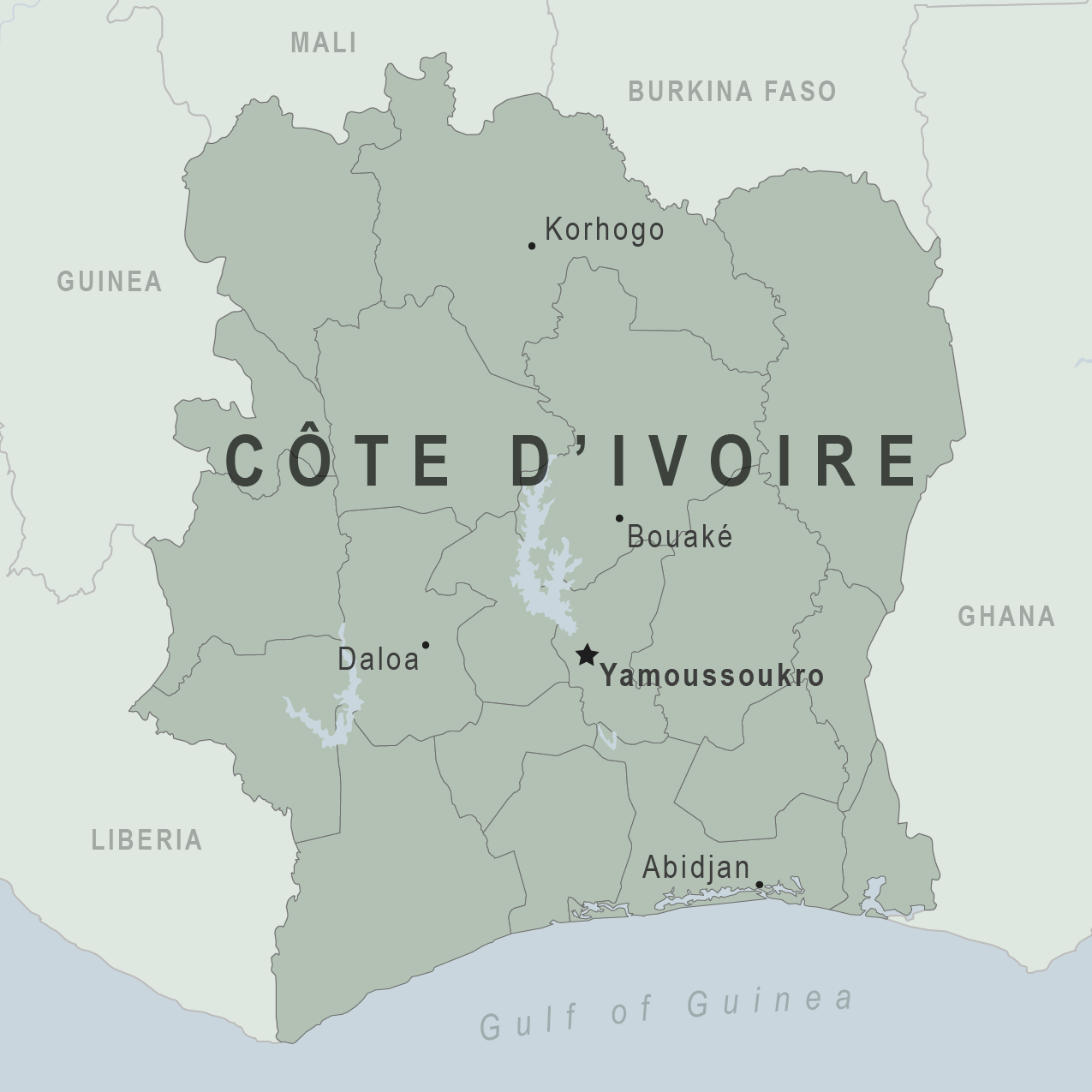On the west coast of Africa, boarded by the Atlantic Ocean and five other countries (Burkina Faso, Mali, Ghana, Guinea, and Liberia), is Ivory Coast. This is indeed the country that I stuck to for a report out of the three countries that I was thinking about: Japan in Asia, Ivory Coast of course, and Hawaii in the North of Pacific Ocean. Being from Burkina Faso myself, I always wanted to go visit Ivory Coast but never had the chance to. All my life I was surrounded by Ivorian friends that were super nice, funny and caring. So let us write a brief story about Ivory Coast.
Tropical
along the coast and semiarid in far North, Ivory Coast (or Cote d’Ivoire for
French speakers) encounters three seasons in a year: warm and dry from November
to March, hot and dry from March to May, hot and wet from June to October. It
expands on a total area of 322,463 square kilometers (Km2) (1).
The
population is about 21,952,093 people (July 2012 estimations). The inhabitants
of Ivory Coast are called “Ivoirians”. It is a French speaking country due to
the colonization, but has its own local languages from different ethnic groups.
The two most popular cities in Ivory Coast are the capital of course, which is
Yamoussoukro, and Abidjan on the coast which remains the commercial and
administrative center, and is probably more popular. “Around 1960 the Ivory
Coast could hardly be described as a society in the normally accepted sense of
the word. The territory carved out by French colonizers in West Africa
approximately seventy years earlier contained widely disparate societies
interacting with one another to varying degrees and in different ways”(2). Close
ties to France since independence in 1960, the development of cocoa production
for export, and foreign investment made Ivory Coast one of the most
prosperous of the West African states but did not protect it from political
turmoil.
 Cote
d'Ivoire is heavily dependent on agriculture and related activities, which
engage roughly 68% of the population. Cote d'Ivoire is the world's largest
producer and exporter of cocoa beans and a significant producer and exporter of
coffee and palm oil. Consequently, the economy is highly sensitive to
fluctuations in international prices for these products, and, to a lesser
extent, in climatic conditions. Cocoa, oil, and coffee are the country's top
export revenue earners, but the country is also producing gold (1).
Cote
d'Ivoire is heavily dependent on agriculture and related activities, which
engage roughly 68% of the population. Cote d'Ivoire is the world's largest
producer and exporter of cocoa beans and a significant producer and exporter of
coffee and palm oil. Consequently, the economy is highly sensitive to
fluctuations in international prices for these products, and, to a lesser
extent, in climatic conditions. Cocoa, oil, and coffee are the country's top
export revenue earners, but the country is also producing gold (1).
One sad thing about Ivory Coast is that instability in the
country. There have been civil wars and innocent people have been killed. In
December 1999, a military coup - the first ever in Ivory Coast's history -
overthrew the government. Junta leader Robert GUEI blatantly rigged elections
held in late 2000 and declared himself the winner. Ivorian dissidents and
disaffected members of the military launched a failed coup attempt in September
2002. Rebel forces claimed the northern half of the country, and in January
2003 were granted ministerial positions in a unity government under the
auspices of the Linas-Marcoussis Peace Accord.
Work cited
(1)
Central Intelligence Agency, https://www.cia.gov/library/publications/the-world-factbook/geos/iv.html,
October 9th, 2012.
(2)
Foster P. and Zolberg A., GHANA AND IVORY
COAST – PERSPECTIVES ON MODERNIZATION, (The University of Chicago Press,
1971), p. 10.


No comments:
Post a Comment